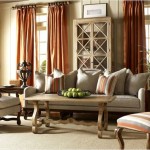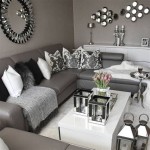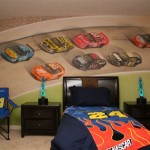Decorating a Long Living Room
Long living rooms present unique decorating challenges. While offering ample space, they can feel awkward and disjointed if not appropriately addressed. Careful planning and strategic furniture placement are crucial to creating a cohesive and inviting atmosphere.
One of the primary goals when decorating a long living room is to break up the length visually. This can be achieved by creating distinct zones within the room. Consider designating areas for specific activities, such as conversation, reading, or entertainment. This zoning strategy helps establish a sense of balance and purpose, preventing the space from feeling like a long, narrow corridor.
Furniture placement plays a vital role in defining these zones. Avoid pushing all the furniture against the walls. Instead, use furniture to create visual boundaries and intimate groupings. A large sectional sofa can anchor one end of the room, creating a conversational area. Alternatively, two smaller sofas facing each other can achieve a similar effect while allowing for more flexibility.
Area rugs are excellent tools for delineating zones and adding warmth and texture. Choose rugs that are large enough to accommodate the furniture within each designated area. For example, a rug placed beneath the seating area helps to visually separate it from the rest of the room. Layering rugs can also add depth and visual interest. Consider placing a smaller, patterned rug atop a larger, neutral rug to create a focal point within a zone.
Lighting is another crucial element to consider. Relying solely on overhead lighting can exacerbate the length of the room. Instead, incorporate a variety of light sources to create a warm and inviting ambiance. Table lamps, floor lamps, and wall sconces can be strategically placed to highlight different zones and create a sense of intimacy. Consider using different light temperatures to further define each area. Warmer light is suitable for conversational areas, while cooler light can be used in areas designated for reading or working.
Wall décor can also contribute to breaking up the length of the room. Avoid hanging a single large piece of art in the center of a long wall, as this can emphasize the length. Instead, consider creating a gallery wall with a collection of smaller pieces. This creates visual interest and breaks up the expanse of the wall. Mirrors can also be strategically placed to reflect light and create the illusion of more space.
The choice of color scheme significantly impacts the perception of length. While lighter colors can make a room feel larger, they can also emphasize the length of a long living room. Consider using a slightly darker color on the shorter walls to visually advance them, creating a sense of balance. Alternatively, using a darker color on the longer walls can make the room feel cozier and less elongated. Incorporating contrasting colors in different zones can also help to break up the length visually.
Window treatments are another essential consideration. Long, flowing curtains can add a touch of elegance and soften the lines of the room. However, avoid heavy drapes that can make the room feel dark and closed in. Opt for lighter fabrics and consider using sheer curtains to allow natural light to filter through while still providing privacy. If the room has multiple windows, consider using different window treatments in different zones to further define the spaces.
Incorporating vertical elements, such as tall bookshelves or plants, can also help to balance the horizontal lines of a long living room. These elements draw the eye upwards, creating a sense of height and minimizing the emphasis on length. Strategically placed tall plants can also add a touch of nature and vibrancy to the room.
Furniture scale is another critical factor. Avoid using furniture that is too small for the space, as this can make the room feel even longer. Choose furniture that is appropriately scaled to the size of the room and the designated zones. A large sectional sofa can anchor a conversational area, while smaller chairs and tables can be used in other zones.
Finally, consider the flow of traffic within the room. Ensure that there is ample space to move comfortably between the different zones. Avoid creating obstacles that impede movement or disrupt the flow of the room. Careful planning of furniture placement and traffic flow can contribute significantly to the overall functionality and aesthetic appeal of a long living room.
Accessorizing is the final touch that brings personality and character to the room. Carefully chosen cushions, throws, and decorative objects can add pops of color, texture, and visual interest. However, avoid cluttering the space with too many accessories, as this can make the room feel cramped and overwhelming. A curated selection of accessories can enhance the overall design and create a cohesive and inviting space.

How To Decorate A Long Narrow Living Room So Much Better With Age

How To Arrange Furniture In A Long Narrow Living Room Solutions For Tricky Spaces

17 Long Living Room Ideas Home Design Lover Narrow Rectangular Rooms

How To Arrange Furniture In A Long Living Room Grace My Space

How To Decorate A Long Narrow Living Room So Much Better With Age

10 Tips For Styling Large Living Rooms Other Awkward Spaces The Inspired Room

How To Decorate A Long Narrow Living Room So Much Better With Age

How To Maximize The Potential In A Long Narrow Living Room Patticake Wagner Style

How To Decorate A Large Living Room Ruggable Blog

How To Arrange Furniture In A Long Narrow Living Room Solutions For Tricky Spaces







